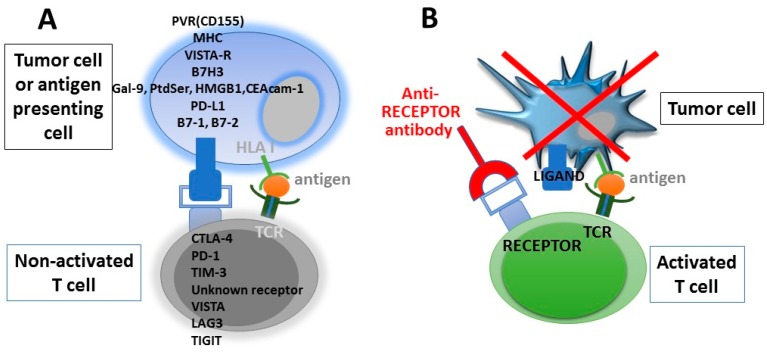Figure 2.
Blocking the immune checkpoint restores the ability of tumor-specific T lymphocytes to kill tumor cells. Antibodies/agents against receptors on T cells (i.e., CTLA-4, PD-1, etc.), and/or their relative ligands (i.e., B7, PDL-1, etc.) on antigen presenting cells or tumor cells re-activate pre-existing anti-tumor T cells that can induce tumor cell killing. Recognition of the human leukocyte antigen (HLA) Class I/peptide antigen complex by the T-cell receptor present on T cells is required to induce tumor cell killing; (A) Inhibitory receptor/ligand interaction is not blocked and the tumor cell is not killed; (B) the immune checkpoint receptor is blocked by an inhibitory antibody and the T-cell is re-activated and is thus able to kill tumor cells. PVR: poliovirus Receptor; MHC: Major Histocompatibility Complex; VISTA: V-domain Ig suppressor of T cell activation; VISTA-R: VISTA Receptor; Gal-9: Galectin-9; PtdSer: Phosphatidylserine; HMGB1: High Mobility Group Box 1; CEAcam-1: Carcinoembryonic antigen-related cell adhesion molecule 1; PD-L1: Programmed death-ligand 1; CTLA-4: Cytotoxic T-Lymphocyte Antigen 4; PD-1: PD-L1: Programmed death 1; TIM-3: T cell immunoglobulin and mucin domain 3; LAG-3: Lymphocyte-activation protein 3; TIGIT: T-cell immunoreceptor with Ig and ITIM domains.

